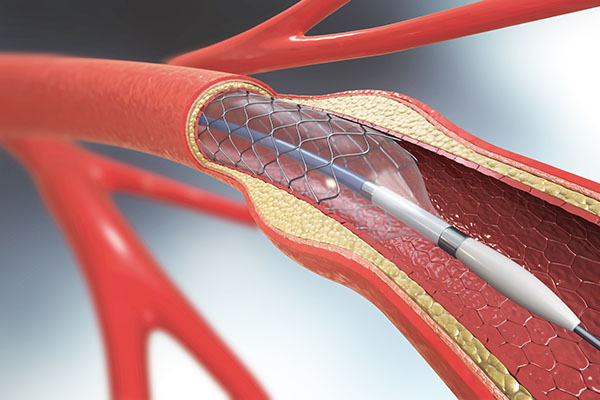 When fatty deposits of plaque clog the carotid arteries—the two main channels in the neck supplying blood to the brain—two dangerous problems can occur.
When fatty deposits of plaque clog the carotid arteries—the two main channels in the neck supplying blood to the brain—two dangerous problems can occur.
Bits of plaque can break off and lodge in the brain, or can build up in the arteries—causing narrowing and severely reducing blood supply to the brain. Both can result in a stroke.
In the United States, someone suffers a stroke every 40 seconds. And with one-third of strokes linked to carotid artery disease, a quick and effective way to unblock neck arteries can help save a patient’s life and prevent future strokes.
Doctors on the St. Mary Cardiothoracic Vascular Surgery Associates team are doing just that, with a minimally invasive procedure known as Transcarotid Artery Revascularization, or TCAR.
Who can it help most?
“TCAR can be useful for a significant number of patients who have severe carotid artery stenosis [narrowing of the neck arteries],” says Maxim Gluhovsky, MD, a cardiothoracic surgeon at St. Mary Medical Center.
Some TCAR patients have already suffered a stroke and undergo the procedure to prevent recurrence. “But in many cases, TCAR is preventative, for patients at high risk of an initial stroke,” Dr. Gluhovsky says.
Red-flag signs that boost the likelihood of having a stroke include smoking, heart disease, high blood pressure, being overweight or a history of peripheral arterial disease (reduced blood flow to the arms or legs).
How TCAR works
The procedure is done under local or general anesthesia. The surgeon makes a small incision in the collarbone area and inserts a tiny tube into the blocked carotid artery.
The tube is then connected to a system that temporarily redirects blood flow near the blockage away from the brain; this helps prevent a stroke during the procedure itself. Blood continues to reach the brain through other blood vessels.
In the United States, someone suffers a stroke every 40 seconds. And with one-third of strokes linked to carotid artery disease, a quick and effective way to unblock neck arteries can help save a patient’s life and prevent future strokes.
The redirected blood is sent through a filtering unit outside the body to collect any remaining particles of plaque. The blood travels out from the filter through a second tube and returns to the body by way of a blood vessel in the patient’s groin area.
Doctors then implant a small stent in the neck’s carotid artery to keep it open and restore normal blood-flow direction. The entire process takes about an hour. Patients are typically monitored overnight and return home the next day.
How it’s different
“TCAR has a lower risk of stroke than standard carotid artery stenting done through the groin area,” Dr. Gluhovsky says. There’s also reduced risk of neck-nerve injury and post-operative pain than standard open carotid artery surgery, he adds. “TCAR also offers a more cosmetically pleasing result, because there’s a smaller scar on the neck.
“TCAR is a valuable tool in preventing stroke that can be performed on many patients who might not be candidates for other procedures. It’s also minimally invasive, with a smaller risk of complications, and offers faster recovery.”
Not sure of your risk for cardiovascular disease? Request an appointment with St. Mary Cardiothoracic Vascular Surgery Associates by calling 215.752.3330.
